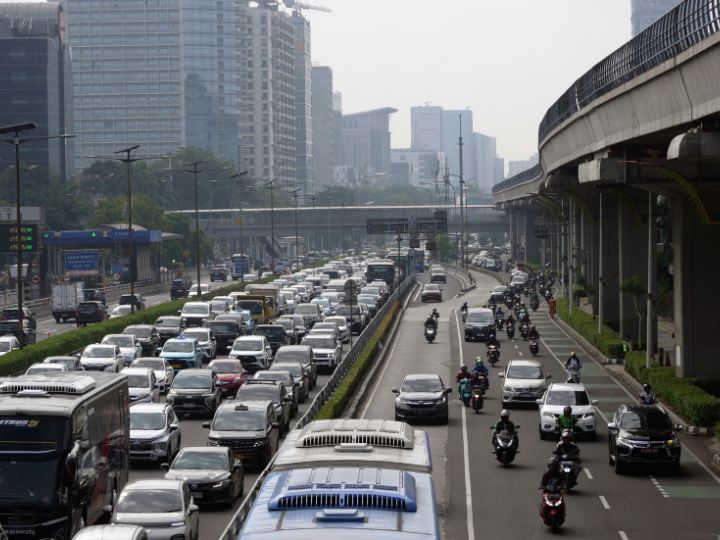The Evolution of Safety in Traffic Control
Road construction and maintenance projects have come a long way from simple barricades and hand signals. Today, advanced systems and smart devices are transforming how traffic is managed around work zones. With growing urbanisation and increased road activity across Australia, safety has become a top priority for both workers and motorists. The evolution of modern safety technology ensures better communication, visibility, and efficiency on every site, significantly reducing accident risks and improving workflow coordination.

The Role of Advanced Traffic Management Equipment in Safety
Modern traffic management equipment serves as the backbone of effective and secure roadwork operations. It includes a wide range of tools designed to guide vehicles safely around worksites while ensuring that workers are protected from oncoming traffic. From digital signage to automated traffic signals and portable barriers, these devices enable precise control and consistent communication across all areas of operation. The integration of smart technology into traditional equipment has redefined how traffic control is planned and executed, leading to safer and more predictable road environments.
Improving Visibility and Awareness on Site
Visibility is a key factor in preventing accidents at roadwork zones. Modern equipment such as LED signage, illuminated cones, and reflective barriers ensure that drivers are alerted to upcoming hazards well in advance. These tools enhance visibility in low-light or poor weather conditions, helping motorists navigate safely through or around restricted areas. Real-time message boards can display updates about lane closures, detours, or delays, giving road users the information they need to make informed decisions. This improved awareness significantly lowers the risk of sudden braking or collisions near work zones.
Automated Traffic Signals and Digital Control Systems
Automation has transformed the way traffic flow is managed on construction sites. Portable traffic lights and digital control systems eliminate the need for manual flagging in high-risk zones. These systems are programmed to manage alternating traffic flow, ensuring vehicles move efficiently and safely through single-lane areas. Automated control not only enhances safety for workers by reducing their exposure to active traffic but also improves consistency by eliminating human error. Many of these systems are now equipped with sensors and timers, allowing real-time adjustments based on traffic conditions.
Smart Monitoring and Communication Technologies
One of the most significant advancements in site safety is the use of smart monitoring systems. Real-time data collection through cameras, GPS tracking, and connected communication devices allows supervisors to monitor operations continuously. If an unexpected incident occurs, immediate alerts can be sent to traffic controllers or emergency services. These systems also track vehicle speeds and flow rates, helping identify potential problem areas before they escalate into safety hazards. This proactive approach ensures a faster response time and maintains a high standard of safety across every stage of the project.
Portable Barriers and Crash Cushions for Worker Protection
Protecting workers from moving vehicles remains a major priority on any roadwork site. Modern portable barriers and crash cushions provide strong physical protection without compromising mobility or setup time. Designed with energy-absorbing materials, these barriers can withstand the impact of an oncoming vehicle, minimising potential injuries. Their modular design allows quick deployment and repositioning as the work zone changes, ensuring continuous safety coverage without significant delays. These physical defences are complemented by clear signage and lighting, creating a comprehensive safety system.
Enhancing Traffic Flow and Minimising Disruptions
Efficient traffic management goes hand in hand with safety. Advanced control systems help maintain smooth traffic flow, reducing congestion and the frustration that often leads to risky driving behaviour. Dynamic lane management, adaptive signalling, and pre-programmed detour systems ensure that disruptions are minimal even during complex projects. Keeping vehicles moving at a controlled and predictable pace significantly decreases the likelihood of rear-end collisions and sudden lane changes, both of which are common causes of roadwork-related accidents.
Training and Compliance in Equipment Use
The effectiveness of any safety system depends heavily on how well it is implemented. Operators and controllers must be properly trained to set up, operate, and maintain modern traffic devices according to Australian standards. Compliance with state and local regulations ensures that all equipment is used correctly and safely. Regular inspections and maintenance routines are also vital to confirm that each device remains functional and meets required safety specifications. Skilled use of advanced technology not only enhances safety outcomes but also supports consistent project efficiency.
Integration of Environmental and Sustainable Practices
Modern safety technology also promotes environmental responsibility. Solar-powered signage, energy-efficient lighting, and recyclable materials are becoming standard features of traffic control equipment. These innovations reduce energy consumption while maintaining high visibility and performance. Sustainable practices not only benefit the environment but also support long-term cost efficiency, helping construction companies meet both safety and sustainability goals.
Frequently Asked Questions (FAQs)
1. What is the purpose of modern traffic management equipment?
It enhances roadwork safety by managing vehicle flow, improving visibility, and protecting workers and motorists around active sites.
2. How does automation improve roadwork safety?
Automated signals and monitoring systems minimise human error and allow precise control of traffic flow, reducing risks for workers.
3. What are smart monitoring systems used for in traffic control?
They collect and analyse real-time data to detect incidents, monitor speed, and improve response times for potential safety issues.
4. Why is visibility important in roadwork areas?
High visibility ensures drivers can see and respond to hazards early, preventing accidents and maintaining smooth movement around worksites.
5. What safety benefits do portable barriers provide?
They create a physical barrier between vehicles and workers, absorbing impact in the event of an accident to minimise injuries.
6. Are modern traffic management tools environmentally friendly?
Yes, many utilise solar power, energy-efficient lighting, and recyclable materials, reducing environmental impact while maintaining safety standards.